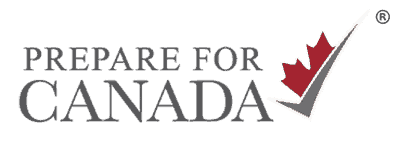
Driving in Canada, or any new country can be stressful until you become familiar with the environment. Whether you’re moving to Canada or have recently arrived, it’s important to become familiar with the essentials of driving in Canada. From getting your driver’s license, to car safety this information will:
- Help you understand provincial driver’s license requirements
- Explain how you can get your driver’s license more quickly and reduce associated costs
- Increase your confidence and safety when driving in Canada.
So here are 10 essential things to know about driving in Canada.
Advertisement:
Jump to:
- 1. Each Province Issues Driver’s Licenses
- 2. Ca nada has a Foreign License Exchange Agreement
- 3. You May be Eligible for Foreign Driving Exp erience Credits
- 4. You Must Meet the Minimum Requirements to Drive in Canada
- 5. Canada has a Graduated Licensing System
- 6. You Must Have Car Insurance to Drive in Canada
- 7. Driving Laws and Rules Vary in Each Province
- 8. Driving Conditions Vary in Canada
- 9. You Must Have a Child Car Safety Seat When Driving with Children
- 10. You Can Finance a Car with a Loan or a Lease
- Provincial and Territorial Ministries of Transportation
1. Each Province Issues Driver’s Licenses
The process to get your driver’s license will vary by province. So, it’s a good idea to check with the province (links provided below) where you intend to live to find out the specific process to obtain your driving license and:
- What identification you will need to provide (for example Confirmation of Permanent Residence Form or Permanent Residence Card)
- What documents you will need to provide from your home country (such as your driving license extract).
Advertisement:
You can save time and money when you gather your required driving documents while you’re still in your home country. This will make it much easier to obtain your driver’s license when you arrive in Canada.
When you are in Canada, you must obtain your driving license from the province where you reside. If you obtain your license in one province and then move to another province you must get a valid license from the new province.
2. Canada has a Foreign License Exchange Agreement
You may be able to take advantage of the Foreign License Exchange privilege if you have a valid driving license from one of the following countries:
United States | Australia | Austria | Belgium | France | Germany | Ireland
Japan | South Korea | New Zealand | Switzerland | Taiwan | United Kingdom
Advertisement:
You can also use an International Driving Permit (IDP). An IDP allows licensed drivers from other countries to drive in Canada without testing or applications. However, an IDP is primarily useful for drivers who are visiting Canada.
Permanent residents can only use the IDP for a defined period of time. This usually varies from 60 – 90 days depending on the province. You must obtain an IDP from your home country.
When you take advantage of the Foreign License Exchange you can get your license quickly without testing.
3. You May be Eligible for Foreign Driving Experience Credits
You may be eligible for credits for previous driving experience if your country is not recognized in the foreign license exchange agreement. The driving credits will reduce the amount of time and cost it will take to get your full license in Canada.
To apply for foreign driving experience credits you must:
- Have proper documentation including a current license, proof of identification, and driver’s extract
- Pass a vision test, written test, and one or two driving tests depending on the number of years of driving experience and documents that you have
- Provide a Letter of Authentication as proof of your driving experience.
Be certain to research what documents you may require to get the driving credits you are eligible for. You can obtain this information from the provincial ministries of transportation (see section: Provincial and Territorial Ministries of Transportation).

4. You Must Meet the Minimum Requirements to Drive in Canada
While minimum requirements may vary by province, generally you must meet conditions related to:
- Age you can drive (minimum age is 16 years in most provinces)
- Medical health including physical, vision, and hearing requirements
- Driver testing including written tests and in-car driving tests.
You can confirm the specific requirements by visiting the website of the Provincial Ministry of Transportation (see links below).
5. Canada has a Graduated Licensing System
The provinces use a graduated licensing system to ensure that drivers have the skills and knowledge to drive safely. The system has three levels:
- G1 is a learner’s permit
- G2 is a probationary license
- G is a full license
To move from a G1 license to a full G license can take up to 2 years. But, you have 5 years to get your G license from the day you pass your G1 test. So take advantage of the foreign license exchange if you can, or obtain foreign driver experience credits to reduce the amount of time and cost to get a full G license.
6. You Must Have Car Insurance to Drive in Canada
Every province and territory in Canada requires drivers to have car insurance. It is illegal to drive in Canada without car insurance and you can face serious penalties that include:
- Fines from $5,000 – $25,000 for a first conviction
- Fines from $10,000 – $50,000 for a second conviction
- Suspension of your driver’s license
- Seizure or impoundment of your car for up to three months.
The minimum requirements for car insurance also vary in each province. So it’s important to know what insurance you must carry to drive a car. You can get more information about what car insurance you require from the provincial ministry of transportation websites.
While car insurance can be expensive, it is a legal must-have if you want to drive with peace of mind and protect the safety of yourself and others. Also, many companies want your business, so you can shop around to get the best insurance rates which will save you money.
7. Driving Laws and Rules Vary in Each Province
While the rules of the road in most provinces are similar, there may be slight differences. You can research the driving rules before you arrive to avoid facing tickets and penalties. As well, this can reduce the stress of driving in a new country and prevent accidents.
It’s a good idea to become familiar with the driving laws in the province where you intend to get your driver’s license. This will ensure that you know the rules of the road in that province.
If you are obtaining your driver’s license for the first time, you may want to consider taking driving lessons from a recognized driving school. When you take driving lessons, you can also lower your insurance rates. When you complete driving lessons, it shows insurance companies that you have received professional training and can drive safely. In turn, they will reward you with lower insurance rates. Click here for government-approved driving schools in Ontario.
8. Driving Conditions Vary in Canada
Driving conditions vary in Canada depending on the season. So you’ll need to prepare your car for both summer and winter driving conditions. Your car may be equipped with all-season tires. But if not, you will have to put on winter tires to prepare to drive when there is snow, ice, and freezing temperatures.
It’s also helpful to prepare for winter conditions and carry additional provisions in your car such as:
- Ice scraper/brush to remove snow and ice before you drive
- Snow shovel
- Jumper cables
- Blankets and extra hats and gloves.
9. You Must Have a Child Car Safety Seat When Driving with Children

In Canada, all children must be in a child car safety seat from the time they are born until they meet age, height, and weight restrictions. There are four stages of child car safety seats that include:
- Rear-facing infant seats
2. Forward-facing child car seats
3. Booster seats for children who weigh 18 kg (40 lb)
4. Seat belts for children who have outgrown their booster seats.
It’s important to know which seat is required for your child and how to install a safety seat correctly. To ensure the safe use of car seats check out these child car seat safety resources.
Related Posts:
Settle in Canada with Confidence and Ease
Getting Your Driving License in Canada
Winter in Canada | Tips for Safe Driving
Car Seats for Children: What You Must Know
Driving Test in Canada: A Full Guide
10. You Can Finance a Car with a Loan or a Lease
Operating and maintaining a car in Canada can be expensive. From regular maintenance to annual car insurance the costs add up very quickly.
However, if you need a car, you can choose between a car loan or a car lease. Or, you can pay cash if you readily have the amount for the car cost. However, most people will either get a car loan or lease a car.
Whether you finance a car through a loan or a lease, there are important differences to know and understand. So it’s important to carefully consider each option to help you make the choice that’s right for you.
This is a general overview of what you need to know about driving in Canada. With additional research and driving tools, you’ll be on your way to driving with confidence and safety. To get more information about the specific driving requirements in each province or territory visit the websites below.
For more information about living and working in Canada, check out our free webinar schedule!
Provincial and Territorial Ministries of Transportation
Click on the province where you intend to live to learn more about how to obtain a driver’s license.
New Brunswick
Corinna Frattini is the content marketing strategist at Prepare for Canada and contributes articles related to working in Canada. With a background in human resources and leadership development, her articles focus on what Canadian employers seek and how newcomers can continue their careers in Canada.

